SUPPORTED HEADSTAND POSE
Salamba Shirshasana (suh-LAHM-buh sheer-SHAHS-uh-nuh)
BENEFITS OF SUPPORTED HEADSTAND POSE
- Strengthens shoulders, legs and spine
- Tones the butt and hips
- Improves spatial awareness
- Helps with stress relief and anxiety
SUMMARY OF SUPPORTED HEADSTAND POSE
Salamba Shirshasana, sometimes referred to as Shirshasana 1 or Baddha Hasta Shirshasana, is a headstand variation where the hands are bound together, supporting the head and neck during this inversion. It’s a milestone asana, requiring core strength, balance, coordination and self-awareness.
SUPPORTED HEADSTAND POSE TUTORIAL
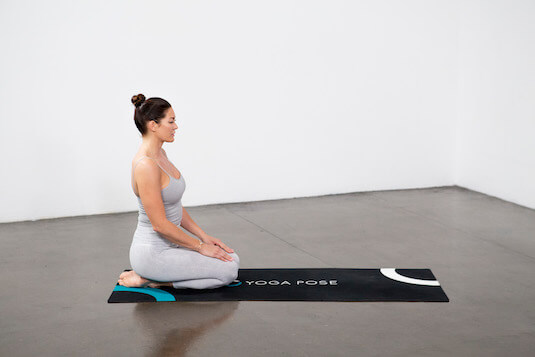
1.) Start by aligning for Dolphin Pose (Adho Mukha Makarasana). Keep the elbows narrow enough to be able to reach them with the opposing hands.
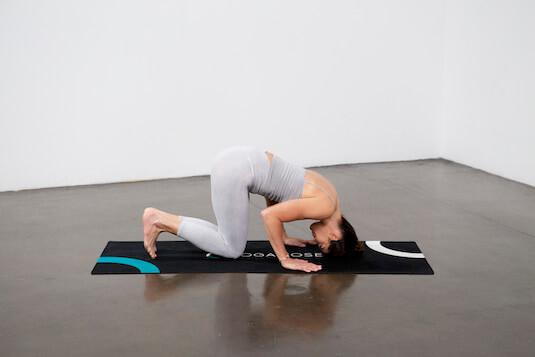
2.) Bring the hands together and interlace the fingers. Press the outer edge of your hands into the floor, creating a cradle for your head.
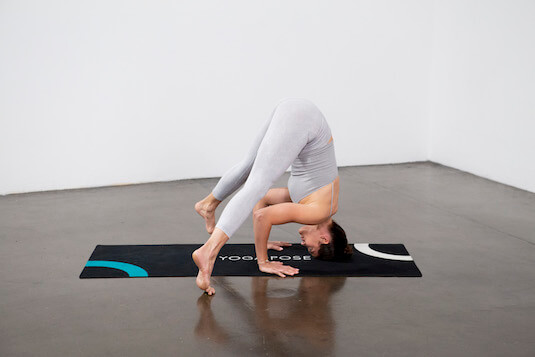
3.)Bring the crown of your head just behind the hands, pressing the back of your head into the open palms. If bringing the pressure into the head and forearms is creating discomfort, use a folded yoga mat or a blanket to cushion the surface.
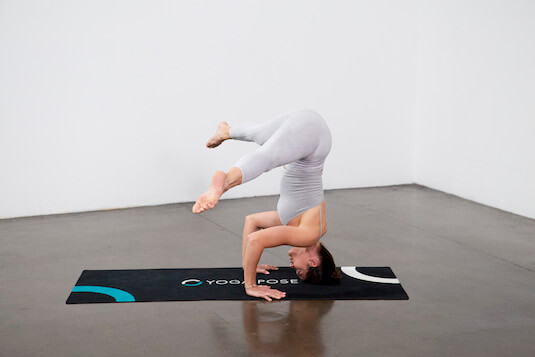
4.) Lift your knees off the floor but keep them as bent as necessary. Walk the balls of the feet as close to your forearms as possible without tipping over. The goal is to bring the hips over the shoulders and shift the balance into the upper body.
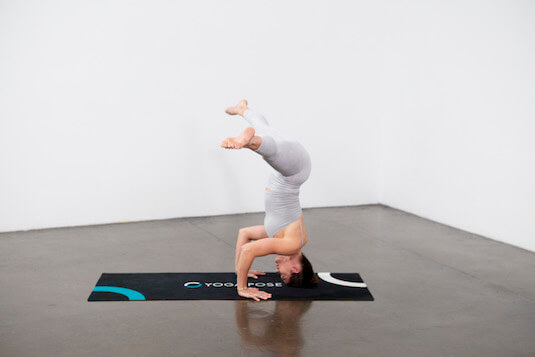
5.) Firmly press the elbows and forearms down to aid the lengthening up towards the sky through the coccyx. On an exhale, let your feel float up towards your bottom, tucking the knees to your chest. Never jump into a headstand – because of the pressure on the neck it’s important to only ever perform this pose when you have utmost control.
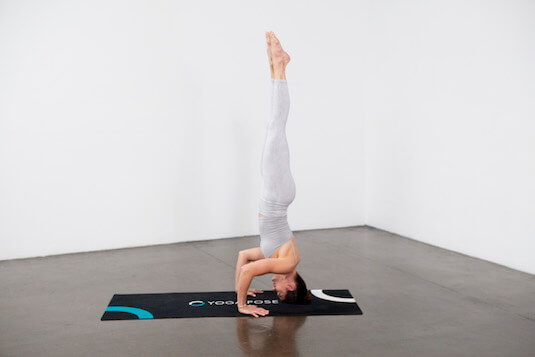
6.) Let the spine settle in the upside down position, and if you feel stable enough, extend one or both legs towards the sky. Hug the ribs in, engage through the gluteal muscles and point your toes.
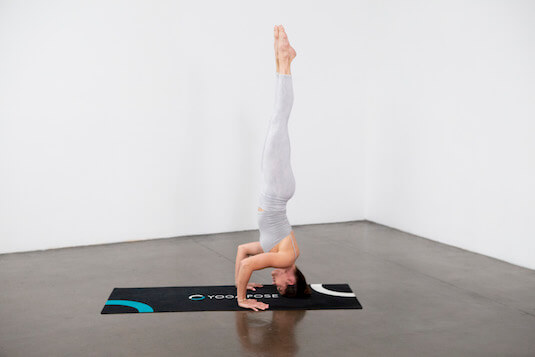
7.) Hold the pose for up to a minute. Do not wait until you are losing control and falling over. To exit Supported Headstand, pull the knees back into the chest, float the feet down to earth, then lower the hips into Child’s Pose (Balasana) and relieve the pressure from your neck.
HEALTH BENEFITS OF SUPPORTED HEADSTAND
SUPPORTED HEADSTAND FOR CALM
As the blood flows towards the brain in an inversion such as this, it allows us to achieve better focus internally and externally. Experiencing this type of clarity has been shown to have a positive effect on the way we react to stress.
SUPPORTED HEADSTAND FOR CORE
Being upside down can be disorienting, therefore keeping upright without losing balance is down to our core muscles. Practising regularly would contribute greatly to your core strength.
Contraindications & Cautions
- Back injury
- Neck injury
- High blood pressure
- Pregnancy (unless you are experienced with this pose and have not been told to steer clear from inversions)
- Not suitable for beginners
Modifications & Deepening the Pose
MODIFYING SUPPORTED HEADSTAND WHEN YOU ARE STARTING OUT
To avoid falls, it may be a good idea to begin by practising a headstand with your back against the wall. Not only would that prevent you from rolling over, it should give you some time to build up strength and confidence to perform a freestanding Supported Headstand.
MODIFYING SUPPORTED HEADSTAND FOR STRONGER CORE AND HIP FLEXORS
Once you have practised for a while and have a good grasp on the balancing aspect of this inversion, you could enter and exit your headstand via a pike press or a straddle press. Skipping the tucking position brings an extra challenge to your hip flexors, core and your sense of balance.
MODIFYING SUPPORTED HEADSTAND TO FURTHER YOUR PRACTICE
Once you have mastered both the controlled entry and exit from this pose, you could experiment with various leg positions, e.g. straddle, bound angle, garudasana bind or front splits.



